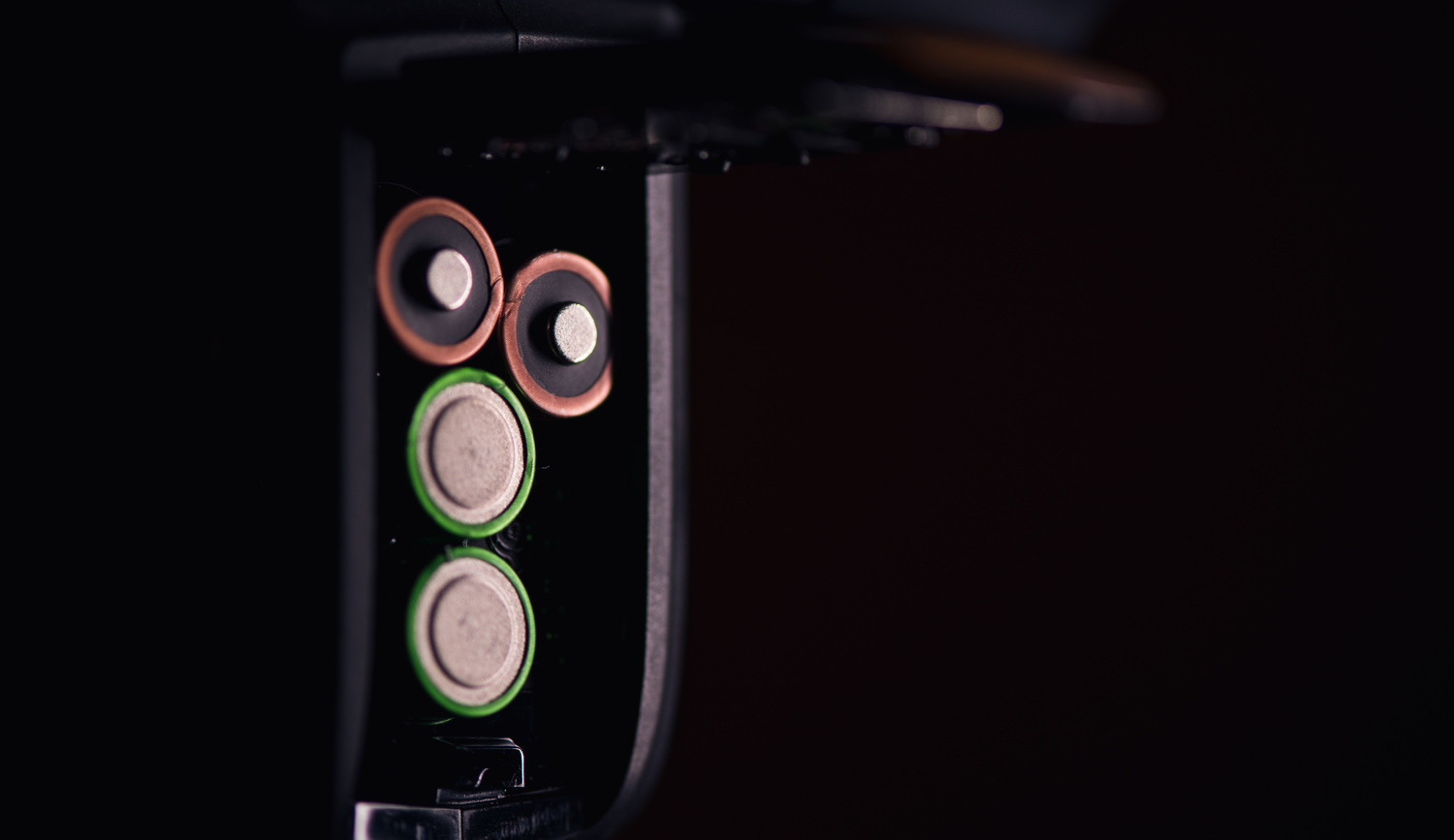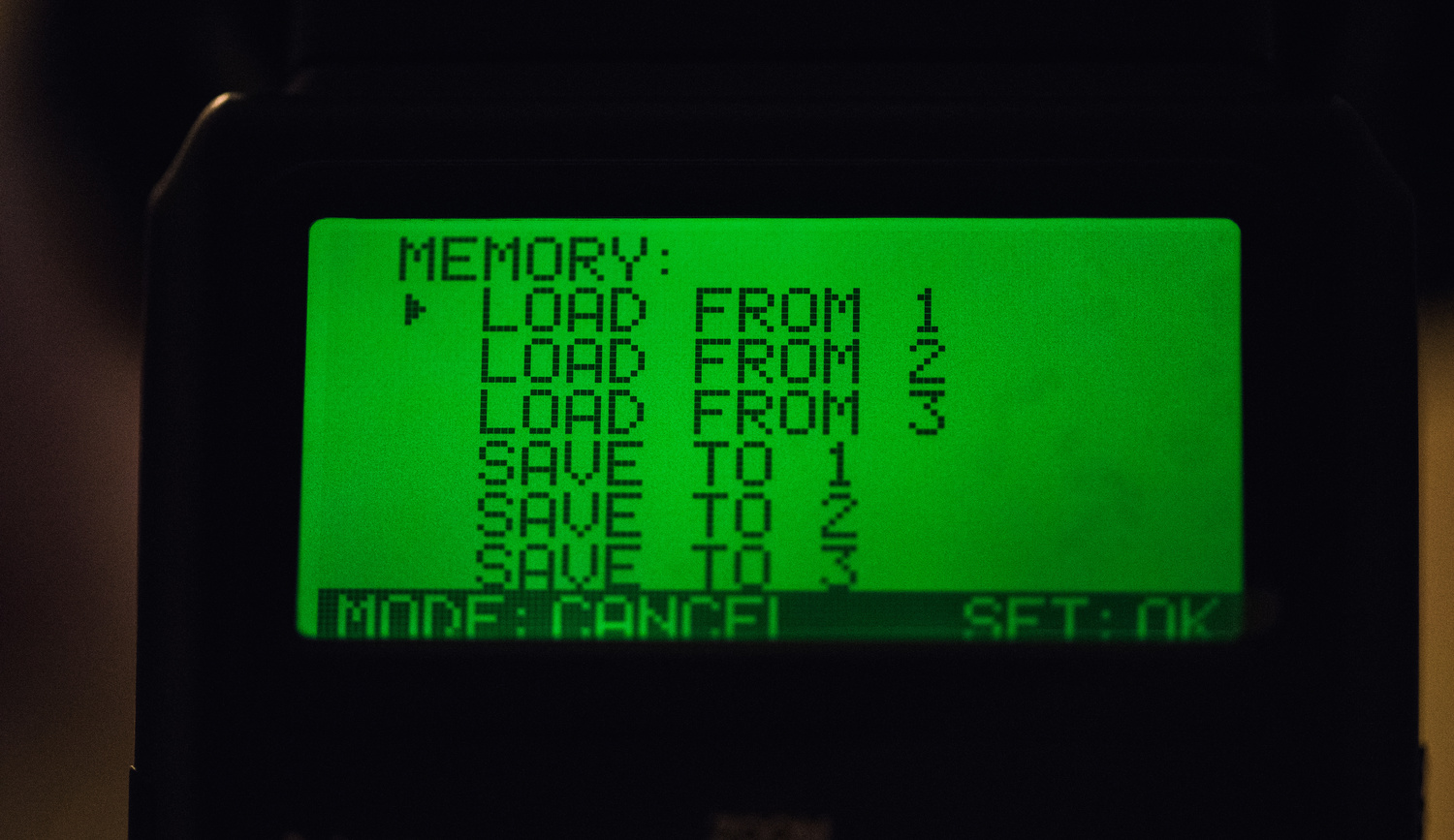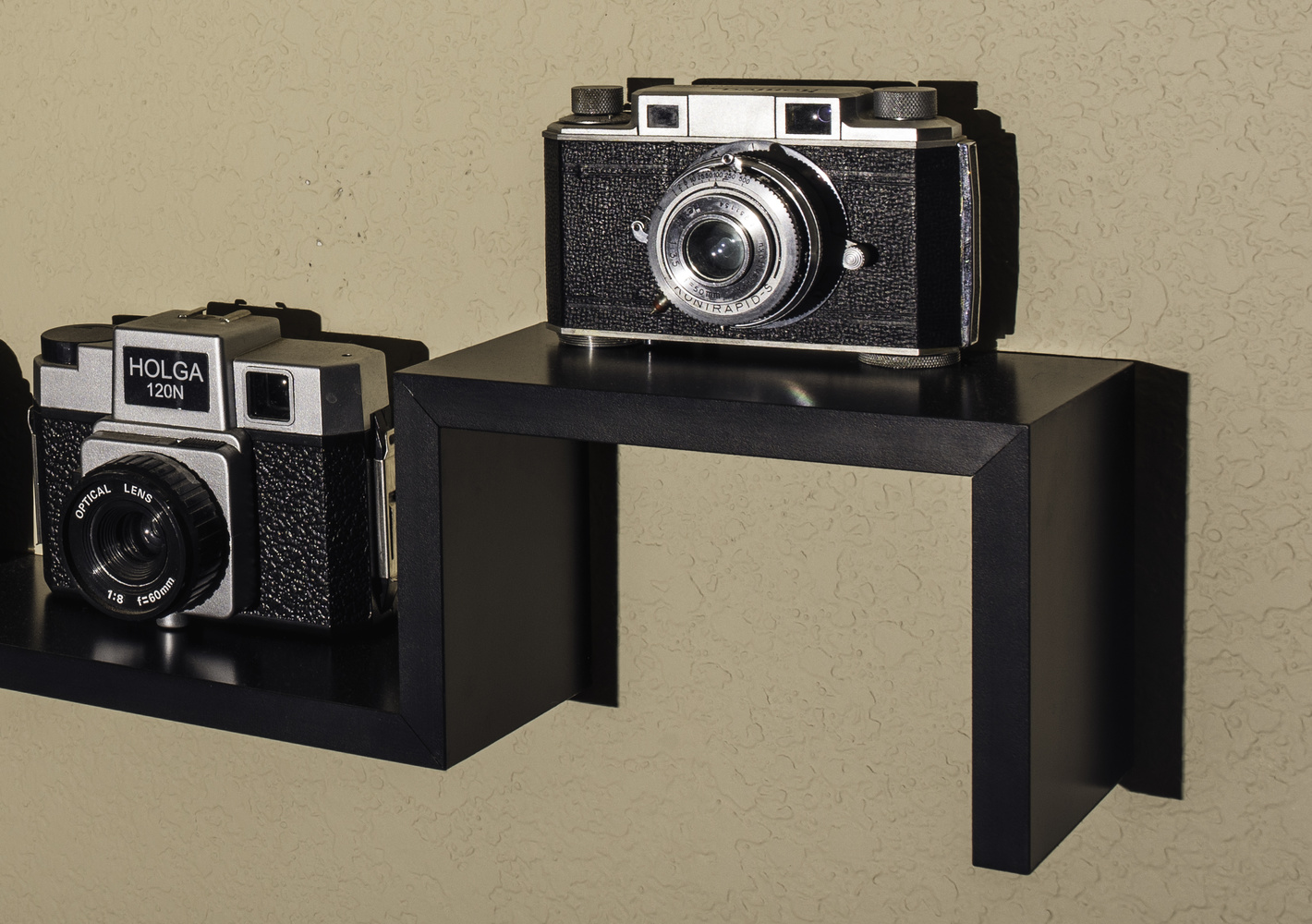When getting into flash photography, it’s easy to look at camera manufacturers' flagship flashes and assume they are the best you can get. When I first started out, I made this exact assumption. But I always wondered how some of the cheaper hotshoe flashes would hold up against these higher priced competitors. So I ordered a few Phottix Mitros+ flashes and put them to work.
Build
The overall build of the flash is very similar to other high-end brands. It feels sturdy in my hand and I have dropped them from decent heights on more than one occasion without any problems (not that I recommend it, but it's nice to know they can handle an accident or two). Overall the flash has a lot of similarities to other brands. The head swivels up and down and rotates side to side, there is an AF assist light, built in wide panel diffuser and bounce card, backlit display panel, and most other features that you would expect in a hotshoe flash.

Phottix Mitros with Magmod Grip attached
One of the main build features that I haven't seen on other flashes is with the locking mechanism on the hotshoe. Most flashes have a switch or a lever that drops down a pin in order to lock the flash into place on your camera. This flash has the same feature, but in addition, it has a rubber gasket that also drops down that creates a more sturdy lock. This really comes into play when mounting the flash onto a cold shoe for off-camera lighting. Before, when using flashes with just a dropdown pin, the flashes would be locked into place but would still feel loose and wobbly. With this rubber dropdown, the flash feels very sturdy and there is zero play between the flash and the cold shoe.

Another cool feature of the build is with the battery layout. Most flashes have you insert the batteries by alternating them between the positive and negative sides. The problem is that it’s hard to remember what one goes first. Do I place the positive in first, then negative? Or the other way around? What always ends up happening is you have you look inside the compartment to figure it out. Not a huge deal until you need to change batteries in the dark. The way the Mitros+ has the batteries laid out is that the top has positive facing out and the bottom is negative facing out. To make this more apparent, they have also made the positive out batteries lay in the horizontal position while the negative out batteries lay in the vertical position. I realize this is a small feature and not something you make a purchasing decision based on, but I found it really helpful in real-world use.

Features
Taking a look at some of the internal features, there are a lot of things you would expect to see. Things like TTL, manual, multi-strobe, zoom control (24-105mm), etc. But one of the main standout features is the built-in wireless receivers and transmitters. What this means is that with the use of a Phottix transmitter (Odin II, Odin, or Strato), you can trigger this flash off camera without needing to attach any type of radio receiver.

Not only that, but each flash also doubles as an Odin transmitter. What this means is that you can trigger an off-camera flash with any of the Phottix radio transmitters, or you can attach a second Mitros+ to your camera and use that to trigger the off-camera flash instead. While the flash is attached to your camera and being used as a transmitter, you also have the ability to control each off-camera flash the exact same way you would as if you were using an Odin transmitter. The on-camera flash can also be used as a flash and transmitter at the same time. I really love this feature because not only does it eliminate all the hassles of carrying, charging, and setting up radio receivers, it also means that I now have multiple transmitter backups. No more wasting money on a backup transmitter that will end up spending most its time locked in a bag. Instead I can use that money to buy another flash that I can actually use and then that flash also doubles as a backup transmitter.

Another cool standout feature of this flash is the ability to save and load a set of three different settings. With this feature, I can have the flash set to my ideal settings for shooting weddings and save that to slot one (something like silent operation, TTL, AF assist light ON, etc.). Then I can have a studio setup saved to slot two (something like manual, beep confirmation, AF assist OFF, etc.). Now when I go from shooting weddings to studio, I don't need to change each individual setting anymore. I just pull up the menu, load the settings I want, and it’s good to go for what I want to shoot.

Power and Recycle Times
One of the biggest arguments for going with higher-end flashes normally boils down to the power and recycle times. The first thing I tested was the flash power. To do this, I placed the Mitros+ and a Nikon SB-910 on a light stand and put them side by side at 10 feet from a wall. I set each flash to full power and 35mm zoom. The camera was set to 1/200 of a second, f/16, ISO 100. As you can see below, the resulting images are pretty much identical.
For the recycle test, I placed the flashes on full power and pressed the test button and waited to see when each was ready to fire again (each flash has a light that will illuminate when fully recycled). The two flashes were very close, with the Phottix flash being ready just a fraction of a second sooner than the Nikon and both remained consistent for a series of five or so flashes. The real difference was when testing each light over a series of flashes. Setting both flashes to 1/8 power and pressing the test button on each flash at a consistent rate, I was able to get through about 10 flashes with no issue on each flash. After that, the Phottix flash would miss a flash, then keep up for a few flashes, then miss another flash. The SB-910 though maintained flashing until I stopped (about 20 flashes). I know these are not the most scientific of tests, but for me it’s enough to be able to distinguish the differences between the two.
What I Liked
- Integrated receivers and transmitters
- Cheaper than camera manufacturers' flagship models
- Build quality and features
What I Didn't Like
- Recycle times not as fast as camera manufacturers flagship models
- Not as much zoom range as camera manufacturers flagship models
Conclusion
The build and feature set of the Phottix Mitros+ flash are enough to compete with camera manufactures flagship models. Add to this fact that for the price of two SB-910s you can get two Mitros+ flashes and the Odin II trigger with money left over. You also get the added bonus of not having to buy receivers and backup transmitter with the Mitros+. While the Mitros+ may not have as fast of a recycle time, in real-world use I never saw an issue with this. By the time I was having to deal with slow recycle times, I was already having to deal with the filled up buffer on my camera. By the time my camera was ready to shoot, my flash was ready as well. If you are a shooter that is constantly popping your flash at high rates of speed and have a camera that can also keep up, then the flagship models may be worth the added expense. But I think for most shooters, the Mitros+ is a very capable and cost-effective product.
Reviewing a hotshoe flash doesn't really require example images, because light from a hotshoe flash is going to look pretty much the same no matter what the brand. But a lot of people still want to see them anyway. So all the below images were shot with the Phottix Mitros+ either bare flash or with some type of modifier. If you’re curious about the specific setup for a particular image, just ask in the comments.


















This sounds very much like the Yn560 IV flash with YN560TX trigger. The only differences I could identify from this write up is the ability of the phottix to save 3 different memory settings and TTL.
I personally never use TTL. I never used it when I had my Canon 580ex either. The Phottix costs $400 vs the YN which costs $69... That's still an enormous gap in price for me. I also recently picked up two Yn560 III that run me $48 per flash and all this lacks vs the Yn560 IV is the ability to act as a transmitter as well... I will continue using YN flashes for now since I feel better about replacing a $69 flash than a $400 flash.
Thanks for the article.
Oh absolutely! If you don't need or want TTL, then there are many good and cheap options available. For me, the main benefit of TTL is the ability to shoot high speed sync, which I do fairly often.
True. I'm the opposite. I haven't used hss for the year lol
I just got a TT685 by Godox today. Combined with an X1 trigger you can have HSS and TTL for a little over $150US, and for a little more again you can get the V860II's which are the same but with a built in Li-ion. TT685 seems to be pretty much the same as the Phottix unit in the review for 1/4 the price.
I have had YN560III's that I loved for a few years and have been fine with manual but after using the TTL units for about 15 minutes the YN's will all be replaced with TT685's or V860II's. I shoot events and run-and-gun with a high degree of accuracy not having to stop and tweak lighting power is invaluable
At the risk of sounding like a broken record (for those of you who know what that means LOL), AA-powered speedlights are obsolete. Yes I know all about being able to pick up batteries in bumfūck at 14 o'clock, but really, Li-on powered speedlights are where it's at.
Totally agree! lithium Ion is the future and its surprising that it has taken so long to get fully embraced. I have a set of fully manual Neewer flashes that are lithium ion and they have great battery life and refresh rates for how cheap they are. i think it will take one of the big manufacturers to do it first before everyone else follows along. As far as i know, i don't think any flash that offers TTL has a lithium ion battery option?
Godox so far appears to be the only manufacturer making Li-on units (your Neewer is a Godox), and Godox offers TTL versions for Nikon, Canon, and I believe even Sony.
Fox example Godox Vings :)
Once you've worked with Li-on units, you'll never go back. Never worrying about your flash slowing down is a tremendous asset. If you only use two AA sets per event than one Li-on battery would last you your whole event. The whole "AA's from the corner shop" argument is moot. As a professional, you should always have backup power with you. Always.
Considering your argument, I suppose I would suggest NOT using a Li-on flash, because your existing units will then bum you out. :-)
Because you can only get large size batteries in Li-on, right? Using Li-on AA's is going to be no different than using standard AA's. It's the large power reserves of the large batteries that make Li-on speedlights fast and, more importantly, consistant.
Yeah, but for how long? There's a reason why the Godox has an 11.1 volt, 2000 mAh 22Wh Li-on battery. It's no contest. Don't take my word for it tho, try one out. I believe MeiKe has now also release a Li-on pack speedlight.
Thanks for the review. I have three of the Mitros+ units with the original Odin transmitter, and I love them. I am very interested in the memory settings, though. I don't see where I can access them on my units; does that feature require a firmware update? As to the comments about the Yongnuo flashes and the Li-ion models, I have a set of YN560 IIIs and a couple of IVs. I also have some Neewer (Godox/.Cheetah/etc.) TT850s that use the Li-ion batteries. Unfortunately, I had the early units that had the battery problems, but I've replaced all the faulty units. The nice thing about the 850s is that you can use the same remote trigger as the AD-360 flashes. It makes for a very portable and versatile setup.
Hmmmm not sure if it's a new feature via firmware or not? To access. On main screen of the Mitros+, press and hold the up button on the directional pad.
Thanks for the review. Would've loved to see a HSS comparison with photos to compare light distribution across the frame. For instance, when wirelessly triggered with a compatible hss trigger, the HSS on my manual godox tt850 suffers from curtain lag while my Nikon lights do not. While there isn't a full black bar, there is noticeable difference still.
I totally meant to do this and spaced it. I'll see if I can do a quick comparison and add update this post!
Too expensive in the UK phottix cost as much as canon 600ex-rt.
Personally I've returned to flagship just for reliability and consistency. I did a year or two running YN580s and found that while the value is great for what you get that they just weren't as reliable as my remaining Nikon flash (SB600) at the time. Thus I demoted them to "backup" duty and purchased a few SB750s, been way happier with them ever since. Not to say third party stuff isn't viable, just my experience with, on brand, flashes has been superior of late.
(Light quality wise, though, assuming they don't misfire, they are indistinguishable)
The rubber on the hotshoe doesn't serve to secure a tight lock. It is for weather sealing the hotshoe from water and dust. The design was copied from Canon's speedlights. As where with Nikon, you have to separately purchase a WG accesory to have the same protection.
Interesting, I can see how it wouod be good for weather sealing. Although it may not be the main design purpose, it still gives me a more secure fit when mounting the flash so double benefit I guess!